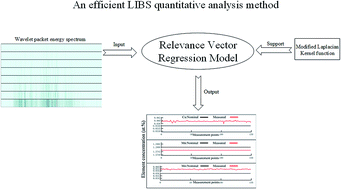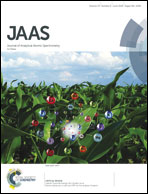Quantitative analysis of steel samples by laser-induced-breakdown spectroscopy with wavelet-packet-based relevance vector machines
Abstract
Laser-induced breakdown spectroscopy (LIBS) has been gradually adopted as a quantitative technique for metallurgy analysis in recent years. However, the accuracy and efficiency of quantitative analysis is still a challenge. In this work, a novel method is proposed to achieve precise in situ composition prediction, based on wavelet packet transform (WPT) and relevance vector machine (RVM). We discuss the difference in LIBS spectral features extracted by the traditional method and WPT, as well as the absolute error of prediction and the mean relative error used as measurement criteria. The analysis results showed that the WPT method of extracting spectral features was more effective than the traditional method. Besides, for predicting the elemental compositions of the regression model, a better performance was obtained using RVM with a modified Laplacian kernel function (MRVM). The mean values of the root mean square error prediction (RMSEP) of MRVM, the calibration curve, RVM, and support vector machine were 0.159, 0.210, 0.303 and 0.179, respectively. Analysis results demonstrated that MRVM possessed superior efficiency, generalization ability and robustness for accurate and reliable compositional prediction. We thought that the proposed algorithm combined with LIBS can be used in real-time composition monitoring of steel samples.



 Please wait while we load your content...
Please wait while we load your content...